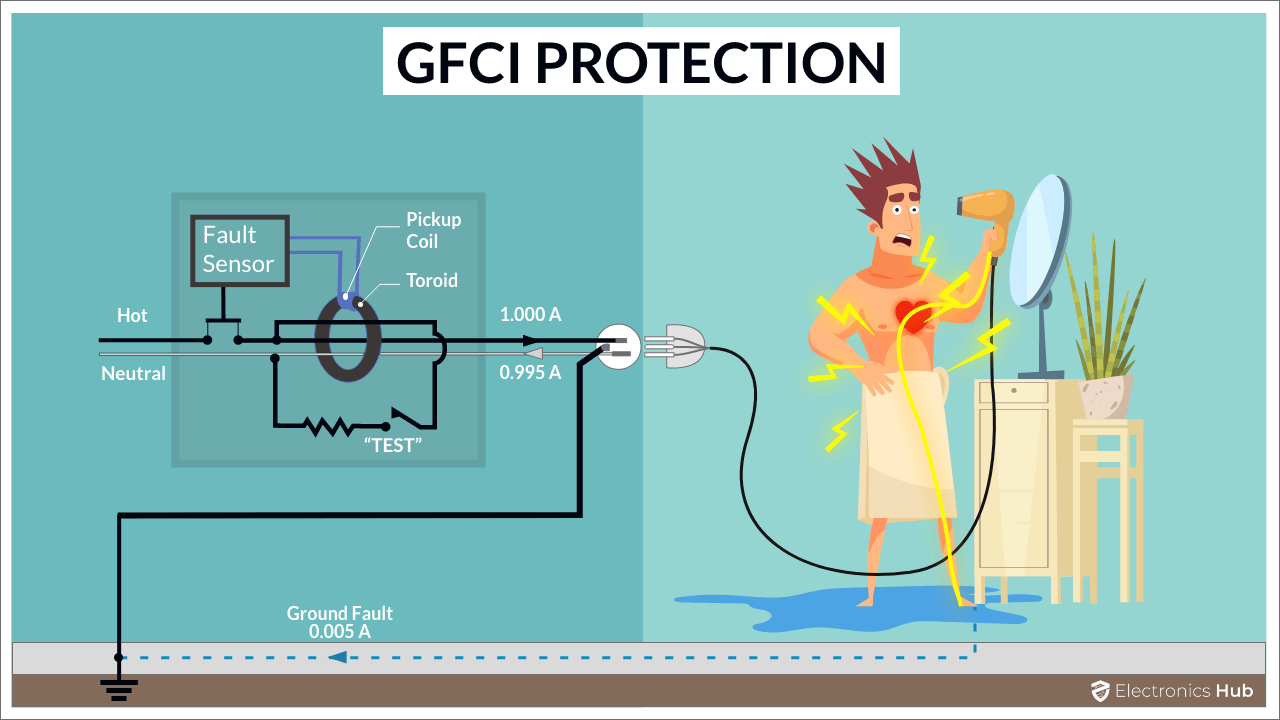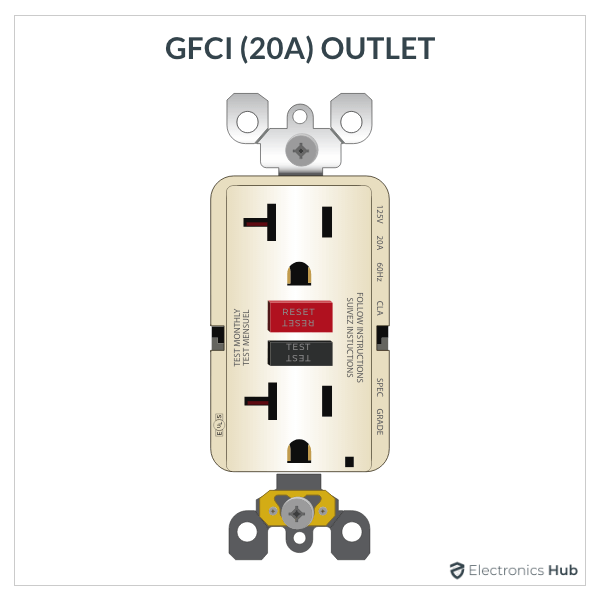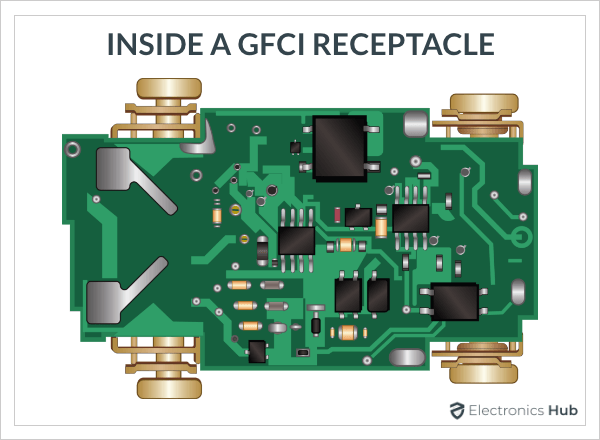NOTE: This is not a user guide on GFCI Circuit Breaker Wiring but rather a technical discussion. Even though installing a GFCI breaker is fairly simple, you have to work around mains AC. So, if you are uncomfortable with that, then please get the help from a professional electrician.
What is GFCI?
As mentioned earlier, GFCI is short for Ground Fault Circuit Interrupter. It continuously monitors the current leaving the black “hot” wire from outlet and the current returning the white “neutral” wire to the outlet. If for any reason the GFCI finds that the current leaving is not equal to the current returning, this means that the current found another way to the ground, usually through a human body. GFCI detects the current difference as low as 4 – 6mA between the leaving and returning current and immediately opens the circuit.
Modern GFCI devices contains an electronic circuitry to monitor the current and also trip the contacts. Class A GFCI can trip in less than 1/25 or 1/30 of a second when they detect a ground fault current of 5mA.
Types of GFCI
GFCI is available in two flavors: GFCI Receptacles (or Outlets) and GFCI Breakers (Circuit Breakers). GFCI Receptacles look very similar to a regular 15A or 20A receptacle on the outside.
But on the inside, where all the magic happens, is entirely different. It contains a complex circuit board, a current sensor and a solenoid to name a few.
You can easily replace your existing non-GFCI receptacles with GFCI Receptacles. Many states in the U.S. have their own rules and regulations regarding installation of GFCI none the less, according to National Electric Code NEC, you need to install GFCI outlets is kitchens, bathrooms, crawl spaces, laundry areas, sinks, basements, garages and other similar places where the chance of electric shock is more. GFCI Circuit Breaker or GFCI Breaker on the other hand are different to GFCI Receptacles. GFCI Breakers look similar to normal circuit breakers and we fit them into breaker panel.
GFCI Breaker
While a GFCI Receptacle provides safety to that particular receptacle or outlet, a GFCI Circuit Breaker can protect all the devices in the circuit. They are significantly expensive than GFCI Receptacles but the good thing is that whole circuit is protected from ground fault. Image If a GFCI Receptacle trips, all you need to do is push the RESET button to use the outlet once again. But if a GFCI Breaker trips, then you to go to the breaker panel and then reset the breaker. GFCI Breakers are available as both single pole breakers and double pole breakers. In Single Pole GFCI Breakers, 15A, 20A and 30A models are very popular but in Double Pole GFCI Breakers, you can find models up to 50A.
GFCI Circuit Breaker Wiring
Installing a new GFCI Circuit Breaker is very similar to installing a regular circuit breaker. If you look at a standard GFCI Breaker, it has a White wire attached to it in the form of a pig tail. We need to connect this wire to the neutral bus on the breaker panel. Let us now see the steps involved in GFCI Circuit Breaker Wiring. NOTE: Even though the GFCI Circuit Breaker Wiring is very simple and similar to that of a standard circuit breaker, you have to take all the necessary precautions and safety measure before working on it.
Step 1: Open the service panel and the first and important step is to turn OFF the main breaker. This will usually be at the top rated for 200A. Step 2: If you are replacing an existing breaker, identify the breaker in the panel, remove it from the panel and disconnect the load wire. In case you are installing the GFCI Breaker on a new slot, remove the knockout plate using pliers. Also, for existing circuit breaker, remove the white neutral wire from the neutral bar. Step 3: Turn OFF the new GFCI Breaker and loosen the LOAD and NEUTRAL screws. Now, connect the black ‘hot’ wire of the circuit to the LOAD screw and the white ‘neutral’ wire to the NEUTRAL screw. Step 4: Now, take the pig tail white wire hanging from the GFCI Breaker and connect it to the neutral bus bar. Double check all the connections and make sure that screws are properly secured. Step 5: We are done with the GFCI Breaker Wiring. It is now time to install the new GFCI breaker. Properly snap the GFCI breaker in to the panel. Step 6: We can now test the newly installed GFCI breaker. Turn off all the appliances and devices connected to the GFCI Breaker circuit and turn on the main breaker. Now, turn the GFCI Breaker ON and push the ‘TEST’ button. If we wired the new breaker properly, then the GFCI Circuit Breaker trips. In case it doesn’t trip, once again check all the connections and if that doesn’t help then it is time to call a professional. Step 7: Turn the GFCI Breaker ON and close the breaker panel door. Your circuit is now protected by GFCI Circuit Breaker.
Conclusion
GFCI Circuit Breaker is a unique device as it is essentially a circuit breaker with GFCI Protection. While GFCI Receptacles are quite common in kitchens, bathrooms and other similar areas, a GFCI Breaker can protect the entire circuit from electric shocks. We learned about GFCI Circuit Breaker, a step-by-step guide on GFCI Circuit Breaker Wiring and also how to install a new GFCI Breaker. Comment * Name * Email * Website
Δ








![]()